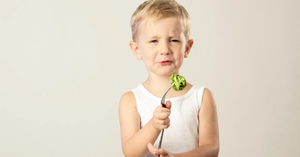When to give the vaccine?
Pertussis vaccine is available in combined forms in the market. The most commonly used are DPT ( Diphtheria-Pertussis-Tetanus ) and pentavalent (Hepatitis B – Haemophilus influenzae- Diphtheria-Pertussis-Tetanus) types.
Other combinations which are also available are acellular pertussis combined with one or several of the following- diphtheria toxoid, tetanus toxoid, hepatitis B, haemophilus influenzae B and IPV.
DPT form of vaccination is included in the national immunisation schedule and according to NIS, the DPT form is given in three doses at 6, 10 and 14 weeks of age to the child. After 3 doses, two boosters are given at 16-24 months and 5-6 years. Sometimes the pentavalent vaccine can be used but it replaces on 6, 10, 14 weeks of DPT and the remainder remains the same. Monovalent forms are used when other vaccines of the combination are contraindicated.
Why should the shot be given?
The vaccine is given to develop protective immunity in the child against pertussis infection. Studies show that upto 85% protection is offered by all forms of the vaccine against infection. Vaccination with three doses followed by one minimum booster gives an average 6-12 years protection against the infection. Vaccination also reduces the bacterial transmission in the community along with the reduction in colonisation of the throat for infected individuals.
What are the side effects?
There are mostly the common and minor side effects in the combined vaccine which are present with almost every vaccine form. The pertussis vaccine can rarely lead to some neurological risks.
- Local reactions may develop. This includes pain, swelling and redness in the area where the vaccine was injected. This is not a cause for concern and it will resolve spontaneously over the next few days.
- Fever may develop post vaccination. Fever can be treated at home itself with antipyretics such as paracetamol being given. The thing to consider during giving your young child medicine is that the dose should be correct according to the age and weight of the child and overdosage has to be avoided.
- Anaphylaxis or an allergic reaction to the vaccine may occur. Allergic reaction is more common with the adsorbed tetanus vaccine than combination. It can be recognised early by reddening of skin and generalised itching followed by difficulty breathing. A child who develops anaphylaxis should be brought to the hospital immediately. It can be managed by giving a shot of anti-allergic and anti-inflammatory agents immediately.
- Combined form can sometimes lead to an episode of hypotonic, hyporesponsive shock. It is sudden onset shock where the child develops limp limbs, reduced responsiveness and either pallor or cyanosis. It is a self limiting condition and does not require treatment. Also, it is not a contraindication for further vaccination.
- The pertussis vaccine can rarely lead to development of encephalopathy. It is a major illness with an acute onset. It leads to the child developing seizures, alteration of consciousness and change in behaviour which lasts for one day or more.
What is Whooping cough?
Whooping cough which is also known as pertussis is an acute respiratory disease of young children. It is an infection caused by the bacteria Bordetella pertussis . The infection is characterised by mild fever and irritating cough along with presence of a characteristic whoop sound on inspiration.
What are symptoms of Whooping cough?
The symptoms of Whooping cough are limited to the respiratory symptoms as it is a local infection and the organism does not invade the bloodstream. There is a wide spectrum of symptoms ranging from mild infection to lethal disease.
- There is a 10 day phase in the beginning of the disease where the child develops tearing of the eye, sneezing and coughing, becomes weak and loses appetite. There is a hacking cough which gradually becomes diurnal.
- This is followed by a 2-4 week stage with more severe symptoms. The coughing worsens with the child coughing rapidly and consecutively. These coughing bouts are followed by deep inspiration which sounds like a whoop and vomiting.
- Young infants can also develop cyanosis and turn blue.
Is Whooping cough serious?
Whooping cough infection ranges from a mild form to a life threatening disease. Development of infection produces symptoms which are far worse in young infants and non immunised children. Whooping cough can lead to development of serious complications such as pneumonia and intense coughing can also lead to minute bleeds in the nose, eye and brain.
How does Whooping cough spread?
Pertussis mainly spreads as a droplet infection. Droplets released by an infected person which contain the bacteria can enter your child’s body through the respiratory routes. Most children develop the disease when they come in close contact with other children who are already infected.








Be the first one to comment on this story.